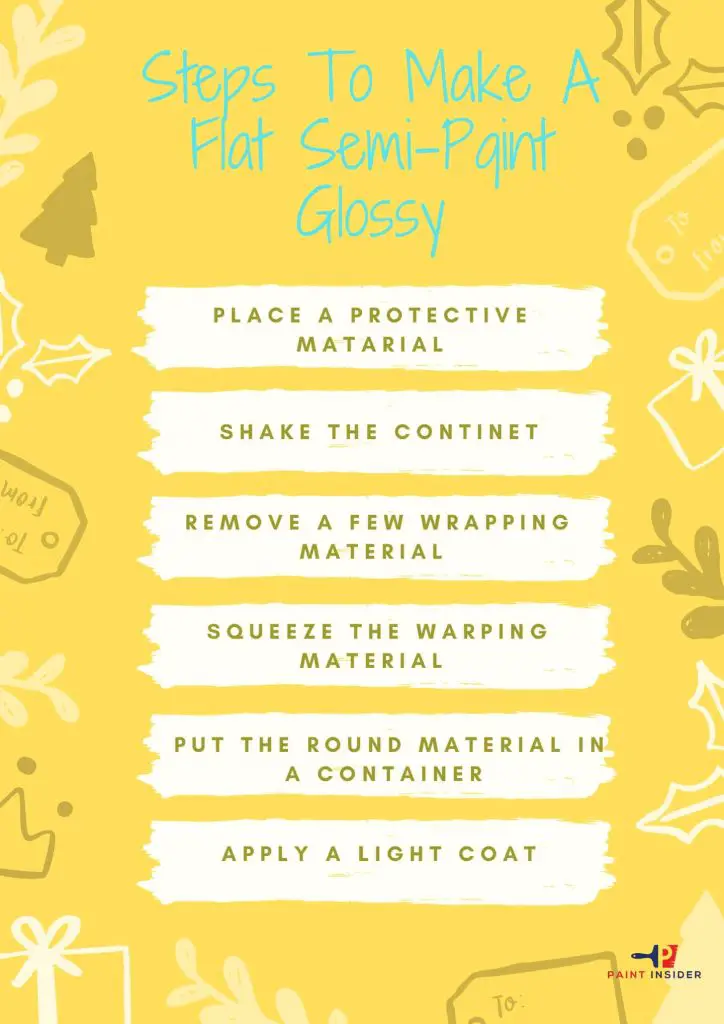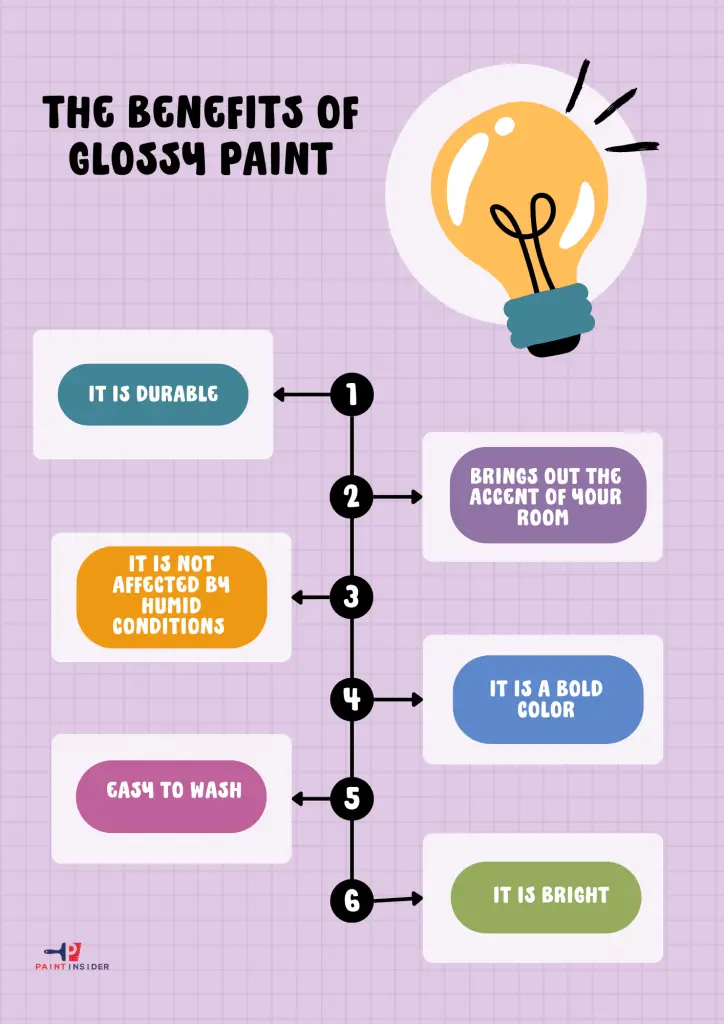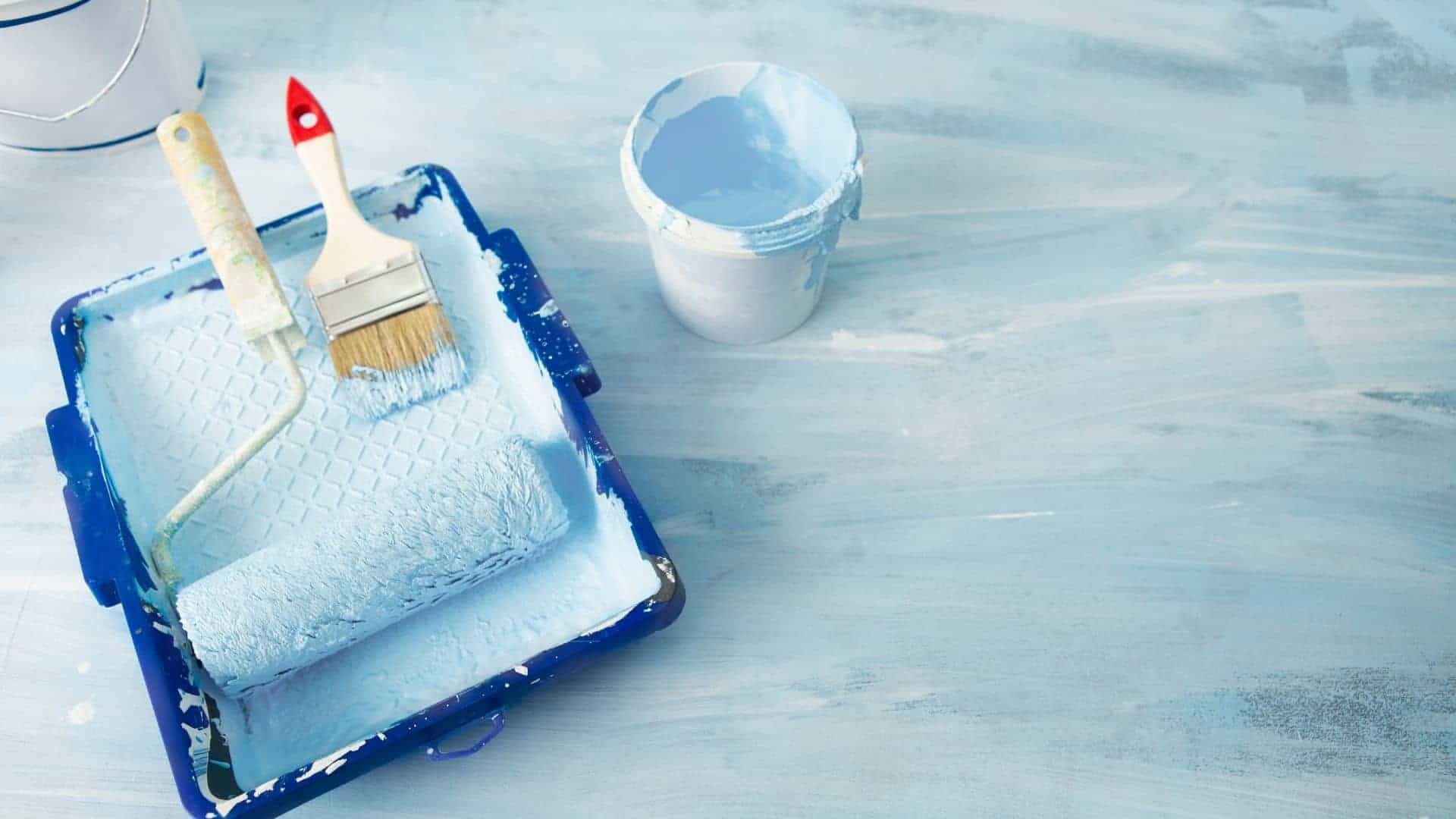You may find it easy to apply flat paint but it gives off a dull finish. So, you should know how to make flat paint semi-glossy to do away with dullness in your room
None of us would wish to stay in a dull-painted house, which is why, if you are a DIY person, you will try to make your room as shiny as possible. In trying to find a perfect fit for your house, you may end up applying dull paint, which in this context we are calling flat paint. So, how can you describe flat paint?
Flat paint contains a higher concentration of pigments as compared to other paint finishes. It is this attribute that makes it a good filler. Additionally, flat paint absorbs light (also described as non-reflective).
You may find it easy to apply flat paint on a given surface compared to other paints. It is cost-effective and effective in getting rid of small bumps on the surface. However, note that flat paint gives off a dull finish needed to make it gloss or semi-gloss (how to make flat paint semi-gloss) to do away with dullness in your room.
What is Flat Paint?
Flat paint, characterized by its non-reflective finish, possesses a unique charm that many homeowners appreciate. It offers a soft, velvety texture that not only masks wall imperfections but also creates an inviting ambiance in any room. Unlike glossy paints, which can sometimes feel sterile or overly shiny, flat paint absorbs light rather than reflecting it, giving spaces a warm and cozy feel. Its subdued nature lends itself beautifully to contemporary and rustic aesthetics alike.
However, if you’re looking for ways to elevate your design while keeping the soothing vibes of flat paint intact, consider blending it with semi-glossy elements. A popular method among creatives is mixing a small amount of semi-gloss or satin finish into the flat paint that can enhance durability while subtly increasing sheen without completely losing that classic matte appearance. Alternatively, strategic placement of semi-gloss accents through trim or furniture against flat-painted walls can create stunning visual contrasts that breathe new life into your existing decor. Understanding how these finishes interact invites limitless possibilities for transforming your space!
Steps To Make A Flat Semi-Paint Glossy
You can give your flat paint a glossy and bright look by using an appropriate glazing medium, and in this case, you can use a water-based poly-acrylic varnish. Like any other painting, you will need to prepare your walls adequately and then apply your thinner accordingly. So, how do you make flat paint semi-gloss? Read on to find out more.
Follow the following steps carefully to prepare a uniform gloss paint from flat paint.

Step 1 – Place a protective material below your painting exercise. You can use an old piece of cloth for this step. The glazing content sips through the drop cloth quickly.
Step 2 – Shake the container holding your glazing medium thoroughly to blend the contents. Shake the can of glazing medium well to mix the ingredients.
Step 3 Remove a few inches of the wrapping material and use it to apply the glazing medium since it is non-absorbent. You should be able to see a glossy shine on the surface.
Step 4 – Squeeze the wrapping material into a round shape.
Step 5 – Put the round material in a container of glaze.
Step 6 – Apply a light coat of the glazing medium on the wall. Repeat this step a couple of times over a specific area.
Choosing the Right Additives for Gloss
When it comes to enhancing the sheen of flat paint, additives can be game-changers. Choosing the right additives isn’t just about achieving a semi-gloss finish; it’s about elevating your overall decor aesthetic and durability. A common choice is a gloss medium that can seamlessly blend with existing paints while offering UV protection. Additionally, consider experimenting with pearl or satin additives, as they add unique depth without overpowering the exquisite of flat finishes.
Don’t overlook compatibility between your existing paint and selected additives, this ensures proper adhesion and longevity of the final look. Testing small batches before committing is essential; it lets you preview your chosen combine’s appearance under different lighting conditions. While navigating these options might feel daunting, exploring innovative blends could transform not only how surfaces catch light but also how they fit into your design vision seamlessly. As you embark on this journey, remember: achieving that perfect semi-gloss isn’t merely a cosmetic choice, it’s an expression of personal style waiting to shine through!
Application Methods for Semi-Gloss Effect
Achieving a semi-gloss finish from flat paint can be an art in itself, and various application methods can enhance the sheen while maintaining a smooth appearance. One popular technique involves using a gloss medium mixed with your flat paint. By gradually blending in small amounts, you can control the level of gloss desired, allowing for personalized finishes that cater to specific lighting conditions or design aesthetics. This method not only prolongs durability but also ensures that the color remains vibrant without turning overly reflective.
Another effective approach is through layering. Start with a thin coat of semigloss or satin topcoat to stop your already painted flat surface. Applying multiple light coats instead of one heavy layer helps to avoid drips and creates an even texture that catches the light beautifully without overpowering the underlying matte look. If you’re feeling adventurous, consider incorporating sponging techniques with diluted gloss paints to create unique textures and subtle highlights that breathe life into your spaces.
Lastly, don’t overlook the power of sanding between coats for achieving that sought-after semi-gloss effect. A fine-grit sandpaper will help smooth imperfections while enhancing adhesion as you apply your final glossy finishes resulting in an effortlessly sophisticated aesthetic. With these tips in mind, transforming flat surfaces into stunning semi-gloss statements becomes not just possible but truly enjoyable!
Tips for Achieving Consistent Results
Achieving consistent results when transforming flat paint into a semi-gloss finish requires both technique and patience. One of the most effective methods is to mix a clear gloss medium with your flat paint; this not only enhances the sheen but also maintains the integrity of the original color. Be sure to start with small test batches, as even slight variations in mixing can significantly alter your final result. Distributing the gloss medium evenly ensures that every stroke replicates that desired semi-gloss look.
Another key aspect lies in your application technique. Using a high-quality synthetic brush or foam roller can help you achieve an even finish without streaks or blotches. Apply multiple thin coats instead of a single thick layer; this approach allows for better control over sheen while reducing drying time and potential imperfections. Finally, remember that drying conditions play an essential role for ideal temperature and humidity levels will enable each coat to cure perfectly, paving the way for that beautifully consistent semi-gloss effect you’re aiming for.
The Benefits of Glossy Paint
There are many reasons why you should opt for glossy paint over flat paint. Note that a higher concentration of ingredients in paint does not make the paint more durable. So what are the benefits of using gloss paint? Continue pursuing to discover more information.

It Is Durable – A higher concentration of pigments in flat paint can make it peel and come off quickly, which is why you should consider using gloss paint because it has high bonding content; this will minimize peeling.
Brings Out The Accent Of Your Room – Gloss paint brings out the finer details of the room and makes them shine brightly.
It Is Not Affected By Humid Conditions – You have seen that gloss paint is more durable than other finishes; this makes it also a good pick if you stay in high humidity areas since it is not affected by moisture and water vapor.
It Is A Bold Color – Gloss paint brings out the boldness in any color and, since it is non-reflective, forms a uniform shiny surface. If you want to stress specific areas in your room, then gloss paint will do the magic for you.
Easy To Wash – Gloss paint is to wash. The layer gloss paint lets you clean the surface quickly without any damage worries. Flat paint is prone to water damage, so you should give it a gloss finish to make it water-resistant.
It Is Bright – Glossy paint is an ideal paint if you want to brighten your rooms. It has desirable reflective properties which you can use to illuminate your house instead of relying on natural light to lighten your room.
Compatible With Other Finishes – You can mix gloss paint with other colors to give you the finish you want without much difficulty. Gloss paint allows you to create various finishes to apply to areas of your choice with much ease.
Disadvantages Of Gloss Finish
Every finish you choose to use has both advantages and disadvantages, and a gloss finish is no exception. Having looked at its benefits, let us now explore its disadvantages. Won’t we?
It Shows Imperfections – If you paint gloss paint on a surface, that is. Poorly painted initially, the result might not be so appealing; Since it unhide the hidden parts of the surface, applying it might bring out a clear finish and might show some imperfections on the surface of a material. For this reason, you might consider using flat paint only on walls with many imperfections.
Painting Over Gloss Finish Is Difficult – You have painted your dull walls with a gloss finish and polished them accordingly. But the finish won’t last forever, and you might want to repaint the surface in the future. Painting over a glossy finish poses a significant challenge to painters since it is not an easy task. The outcome of such an endeavor is mostly an ugly-looking surface.
With time, your gloss finish will lose its luster and change its appearance completely; Initial coats may begin to show up prominently, so are unwanted spots, and all this will add up to an ugly surface, making it almost impossible to repaint.
Nevertheless, you can maintain your gloss finish by ensuring it is clean all the time, and this will save you from stressing about how to do a touch-up of your walls in the future.
Common Mistakes to Avoid
One of the most common mistakes people make when trying to achieve a semi-glossy finish from flat paint is overlooking surface preparation. If the surface isn’t clean and well-prepped, even the best paint modifications will fail to yield the desired effect. Always ensure that you repair any imperfections, sand down rough areas, and apply a good primer where necessary; this can vastly improve adhesion and enhance the final appearance.
Another pitfall is underestimating the importance of mixing techniques. Simply adding a gloss medium or varnish on top of flat paint might seem like a quick fix, but if not mixed thoroughly or evenly applied, it can lead to uneven sheen and unsightly streaks. Instead, consider blending the flat paint with a suitable glossy additive before application for an even finish. Lastly, keep in mind that lighting plays a significant role in how finishes appear; test your newly created semi-gloss in different light conditions to ensure consistency and satisfaction before committing fully to your project.
Conclusion
Making a flat paint semi-glossy need not be a difficult task that experienced painters can only perform. Armed with the right tools and procedures, you can easily make flat paint look glossy and shiny to brighten your spaces.
Follow the steps outlined above to achieve a perfect blend of gloss finish for your project. It would be best to keep in mind that you must do patch tests on the wall to ensure you achieve the finish you want. Enjoy your painting!

